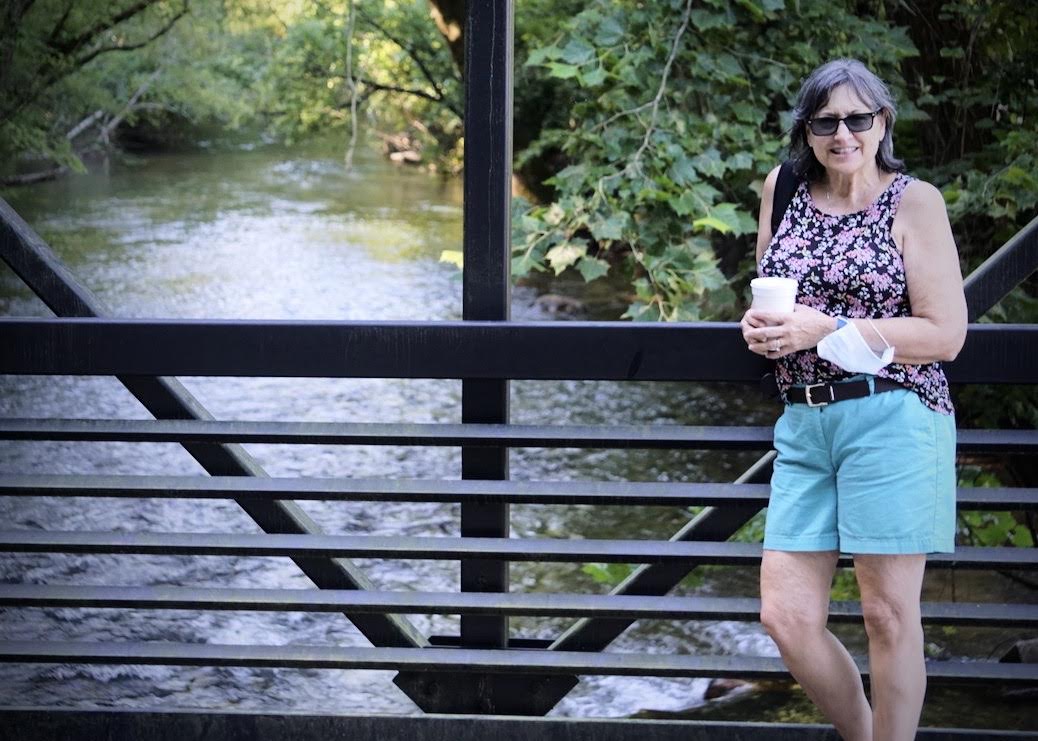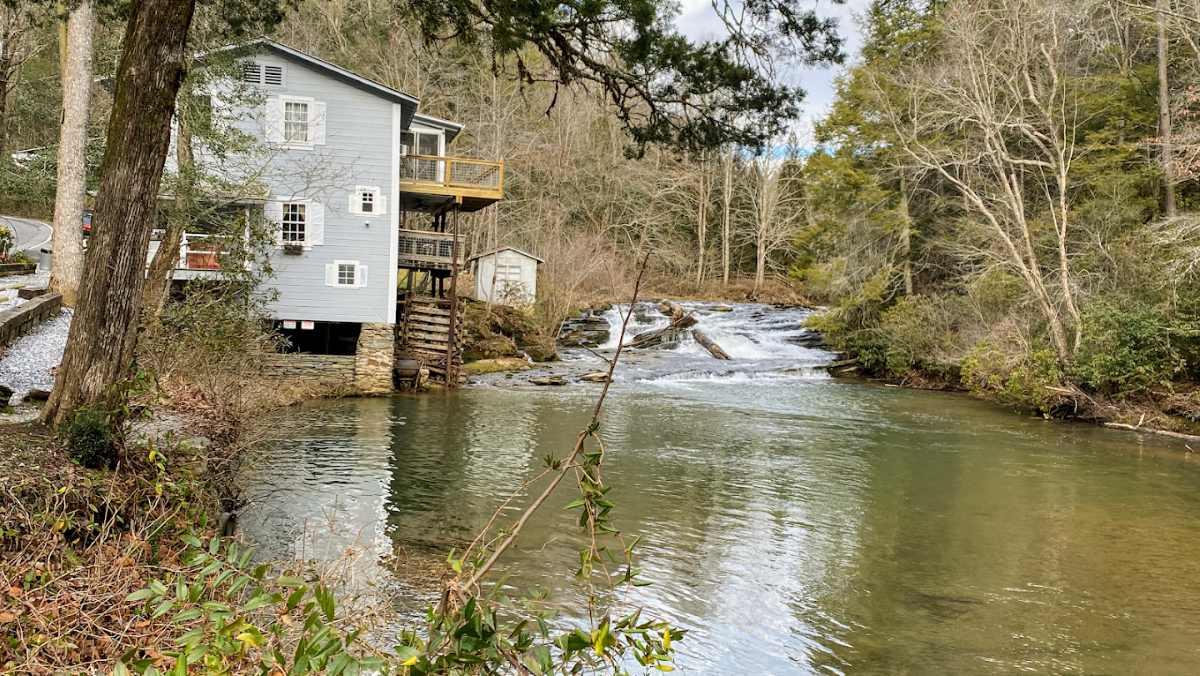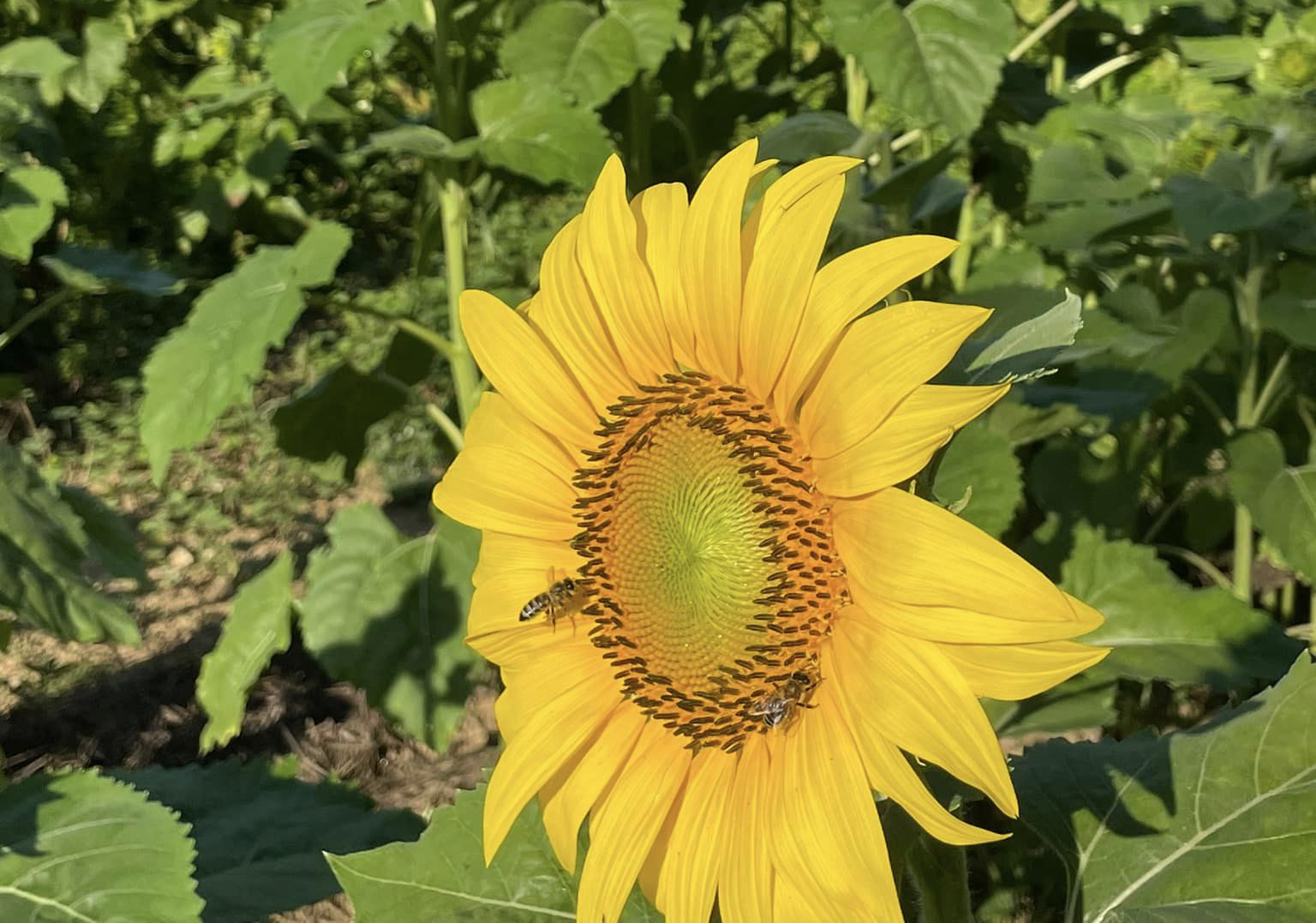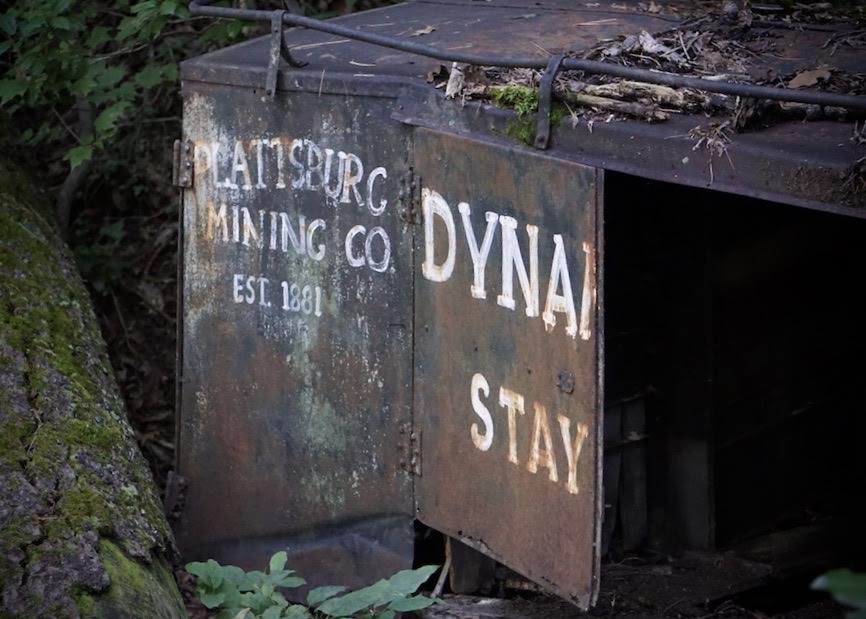
The Hardman Heritage Trail is a paved 1.1-mile path that goes from the southern entrance at Hardman Farm to the northern entrance at Edelweiss Strasse and Kollock Strasse near the Helen Water Park. Free parking is available at each entrance. The trail is accessible for wheelchairs and strollers and is open to dogs and bikes.
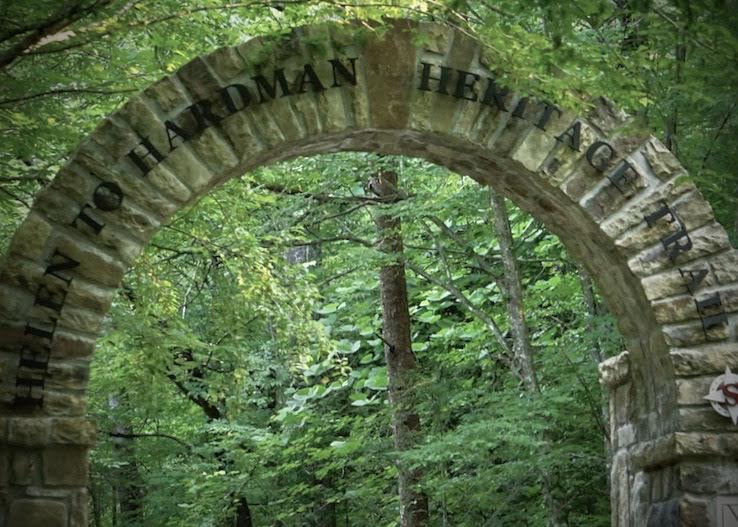
My husband, Bob, and I hiked it this week after I read about it on Facebook. We set out before 8 a.m. to avoid some of the July heat. Our goal was to walk the trail from Hardman Farm to Helen and then continue through town to eat breakfast on the north side of Helen. We made it to Dottie’s Kitchen on the south side of Helen and decided we had gone far enough. We enjoyed homemade biscuits and coffee and then returned the way we had come –– probably walking closer to three and a half or four miles total.

Much of the trail covers land donated by Ted Turner to the Trust for Public Land in 2007. The trust protects the trail’s land in perpetuity.

The trail has been described as one of the best walking trails in Georgia and we heartily agree. It is a beautiful walk. We’ll go back again because every season will bring new vistas and colors to enjoy. The trail is mostly flat and winds along the Chattahoochee River.
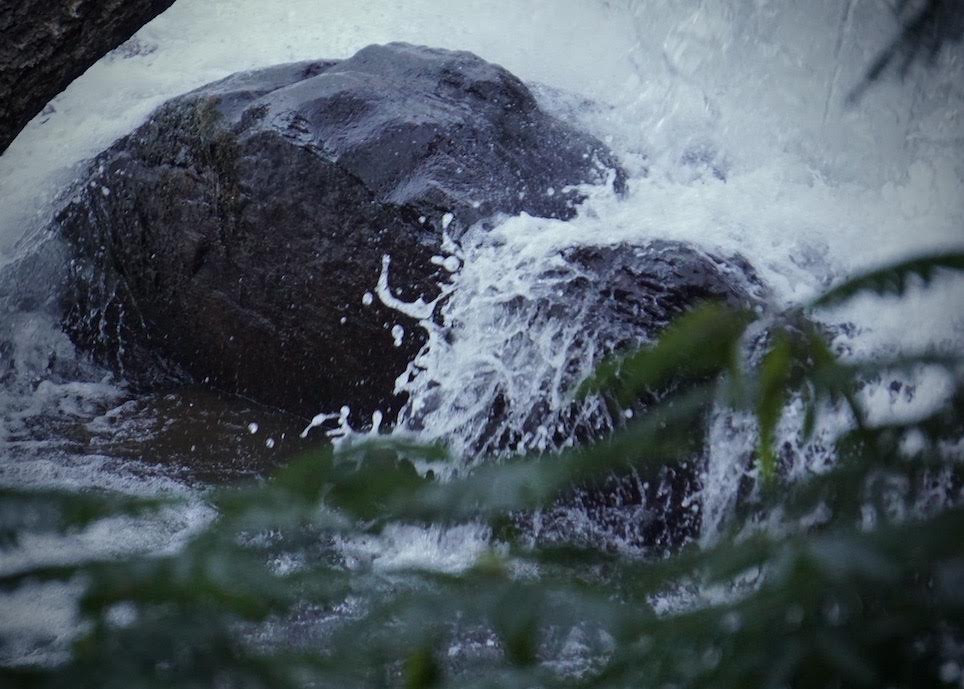
NORA MILL
Besides being a beautiful walk, three historical areas of interest can be seen along the trail.
First, Nora Mill can be seen across the river from one viewing area. The mill was established in 1876 by John Martin, a gold miner who stayed in the area permanently after the gold ran out. Dr. Lamatine Hardman, who would later become the governor of Georgia (1927-1931), purchased the mill in 1902 and named it for his sister. The Hardman family owned the mill until 1998. Dr. Hardman, a physician, later purchased the Hardman Farm nearby in 1903.
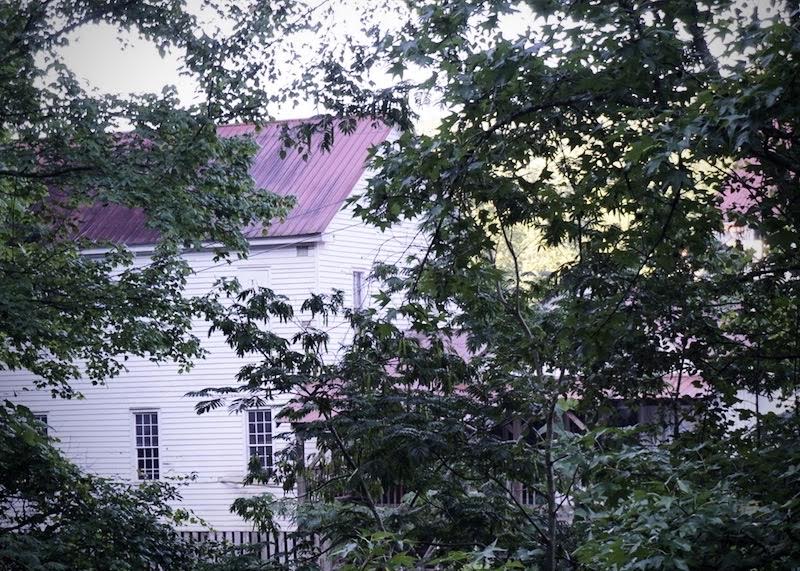
Today, the mill continues to work, still using the 1500-pound French Burr Stones to grind corn and wheat. A small dam with a waterfall can be seen on the Chattahoochee River just behind the mill. While we passed by, we also saw Canadian geese flying over the area and swimming in the water.
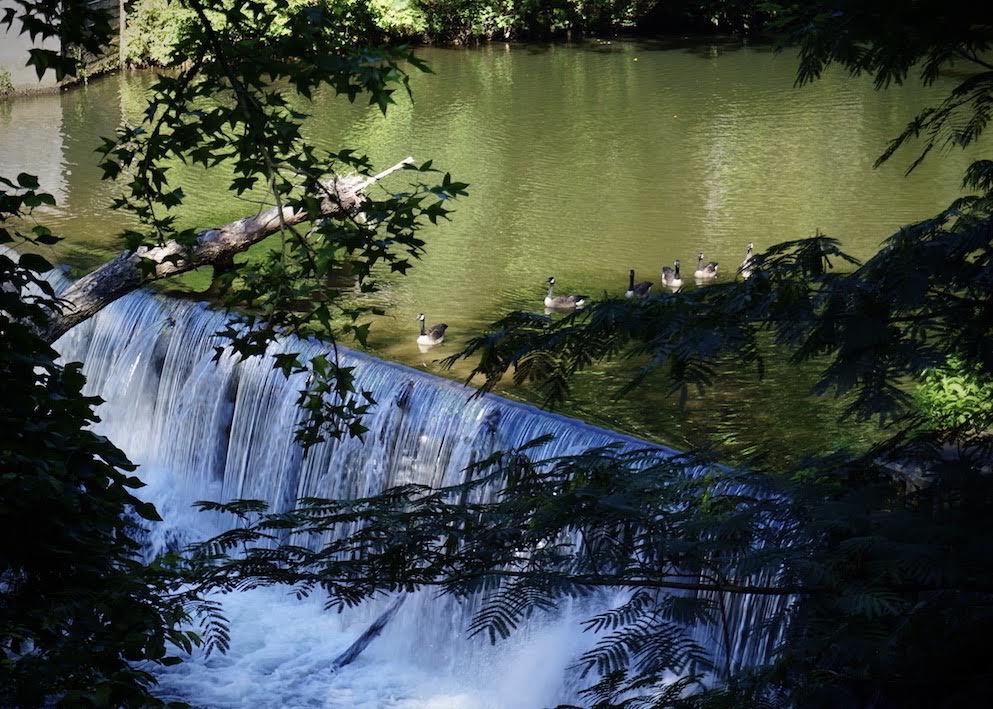
Transporting lumber to railroad
Next, near the northern entrance of the trail, some of the original tracks from the Gainesville & Northwestern Railroad can be seen embedded into the concrete pathway. The railroad was begun in 1911 by A.R. Byrd and C.D. Matthews, the owners of the Byrd-Matthews Lumber Company to transport logs to Gainesville from Helen. The railroad took ten train carloads of logs a day (about 100,000 feet of timber) down the 35-mile track. Both the railroad and the lumber company were operational by 1913. In 1915, two passenger cars were added to the train as well, allowing passengers to go to Cleveland or Gainesville for a day of shopping. The old depot is now the site of the visitor’s center at Hardman Farm State Historic Site.
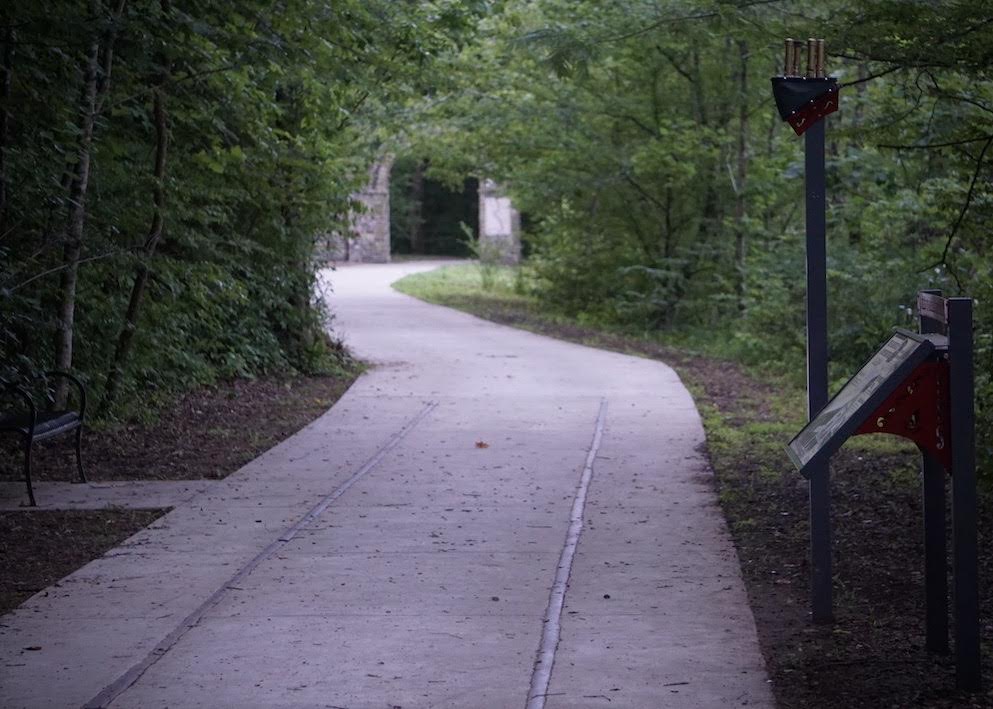
Railroad tracks and the whistle are all that have survived from the Byrd-Matthews Lumber Company. (Margie Williamson/Now Habersham)
The lumber company impacted the area in many ways. The company provided electric power and telephone service for the community. When the power was turned off at 10 p.m. each night, the people of the town went to bed. The area became named “Helen” for the daughter of one of the company’s managers, John E. Mitchell. Apparently, the early town of Helen was a pretty rough town that needed a sheriff and a deputy. It was populated mainly with “wood hicks,” men who cut the timber for Byrd-Matthews.
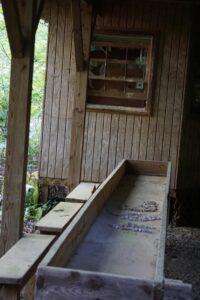
Beside the historical marker on the trail is the original whistle used by the lumber company to end each work period. The whistle was last used in 1931 when the sawmill was closed permanently.
MINING FOR GOLD
Finally, at the northern entrance, right after crossing the river over the pedestrian bridge, take the gravel path to the left. The remnants of the mining operation of the Plattsburgh Mining Company of New York can be seen. Plattsburgh bought a section of land in 1895 and began mining for gold in 1896. The location offered low-grade gold, but with equipment that included a steam ten-stamp mill to remove the gold from rock, the company was very profitable.
According to an 1849 report in White’s Statistics of Georgia, “The first discovery of gold in the state of Georgia was made on Duke’s Creek, Habersham County, in 1829.” That area had become part of White County by 1896 and was in the southwest of the Nacoochee valley near Loudsville. Much of the Nacoochee Valley was rich with gold into the early 1900s. Panning for gold still takes place for around Helen but draws tourists instead of miners.
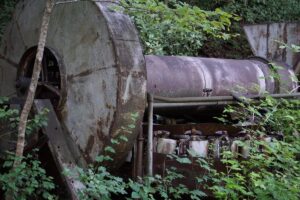
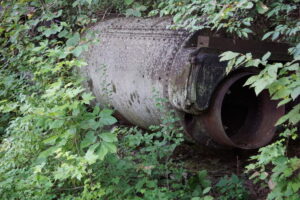
The 1896 Gold in Georgia reported that over $16 million in gold was taken from Georgia mines during the peak of gold mining. In 1847, almost $600,000 in gold was collected, making it the most profitable year of mining. While Plattsburgh Mining was late to mine for Georgia gold, as Mark Twain, “Thar’s gold in them that hills.” Apparently, his statement is still true.
